Do cats feel emotions? Do they display behaviors that show love toward their owners? According to Dr. Allen Schoen, a holistic veterinarian, cats have the same neurotransmitters, neuro-hormones, and parts of the brain as we do. This suggests that they experience emotions just like humans.
If you’re wondering how your feline friend expresses its love—or if it loves you at all—here are the various ways cats show affection. Some of these behaviors could also be signs of other needs, so it’s important to observe your kitty closely to understand its feelings.
1. Slow Blinking
If your cat looks at you and blinks slowly with both eyes, it’s a clear sign of contentment and trust. Blinking is a cat’s way of pausing its main survival function—vision. If your feline blinks at you, it means it trusts you with its life and loves you.
How to Respond: Give your cat a slow blink in return. This tells your furry friend you love and trust it, too.
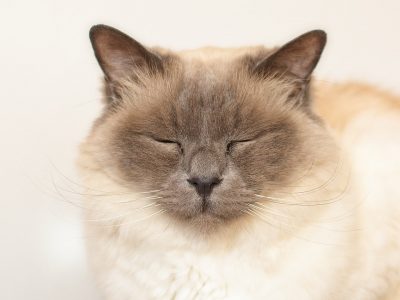
2. Rolling Over and Showing Its Belly
A cat’s belly is one of its most vulnerable areas since it protects vital organs. If your cat exposes its belly to you, it’s demonstrating the ultimate sign of trust and love (source).
How to Interact: Resist the temptation to rub its belly unless you know your cat enjoys it. Most cats will instinctively react with a defensive bite or scratch. Instead, acknowledge the gesture by speaking softly or giving it a gentle pet later.
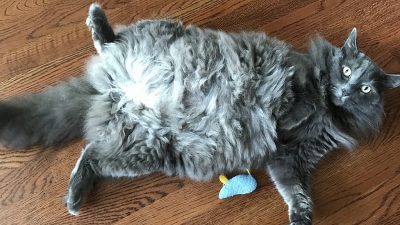
3. Sleeping or Relaxing Next to You
If your cat consistently chooses to sleep or relax near you instead of with other family members, it means your feline friend enjoys your company and trusts you. Sometimes, if there’s no space, your cat may settle behind your head on the couch’s backrest just to be close to you.
How to Respond: Enjoy your cat’s warmth and companionship. If it’s awake but relaxed, offer a gentle pet. If it’s sleeping, simply enjoy its presence.
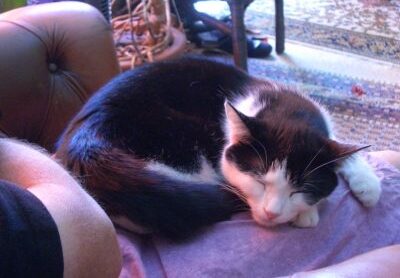
4. Tail Held High While Approaching You
A cat’s tail is a great indicator of its mood. If your cat approaches you with its tail upright and relaxed, it’s showing happiness and love. A slight quiver at the tip of the tail signals excitement to see you.
How to Interact: Acknowledge your cat’s affection by gently scratching its head or cheeks.
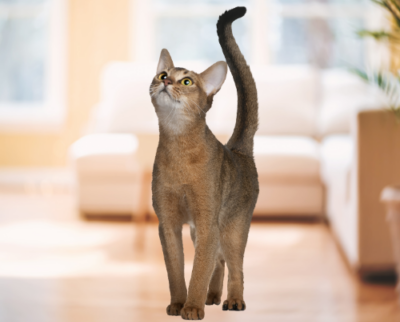
5. Licking You
If your cat licks your hands, face, or even your hair while grooming itself, it’s demonstrating a social bond. Licking is a behavior cats use to show affection to those they trust.
How to Respond: Enjoy the gesture, but be mindful of excessive licking—it may indicate anxiety. If your cat licks for too long, gently distract it with a toy or soft petting.
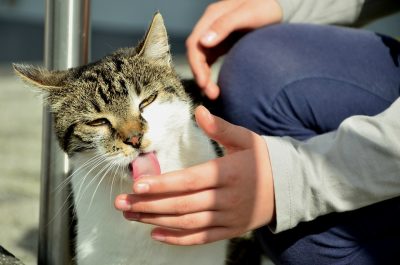
6. Gentle Love Bites
Soft bites are often a playful way for cats to express love. However, they can also signal overstimulation when being petted.
How to Respond: If your cat nibbles affectionately, respond with a gentle scratch on its head, then give it some space.
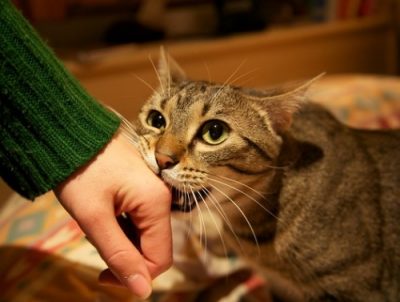
7. Rubbing Against Your Legs
According to Logan Forbes, a Cat Physiology and Behavior Specialist, when your cat rubs against your legs, it’s marking you with its scent. This is both a greeting and a way of reinforcing you as part of its territory.
How to Respond: Let your cat rub against you and reinforce its bond with a gentle pet before continuing your routine.
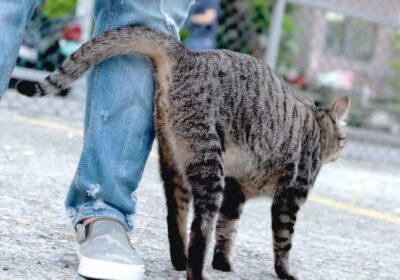
8. Head Bunting
“Bunting” refers to when a cat rubs its head against objects or people to leave its scent. Cats have scent glands on their cheeks, chin, and forehead, and they use them to mark their humans. According to Vetstreet, when a cat head bunts its human, it deposits its scent and simultaneously picks up their scent. This is an affectionate greeting.
How to Respond: Observe your cat’s reaction. If it enjoys a soft head scratch, return the affection. If it doesn’t react much, simply appreciate the moment.
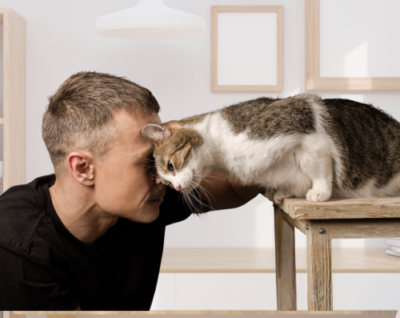
9. Following You Around
If your cat follows you wherever you go, it means your feline adores you! This behavior shows a strong bond. It can also signal curiosity, a desire to play, or even separation anxiety.
How to Respond: Acknowledge your cat’s presence by talking to it or offering playtime. If separation anxiety is suspected, ensure your cat has engaging toys and a comforting routine.
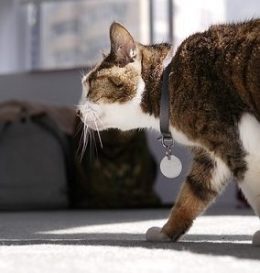
10. Bringing You “Gifts”
If your cat brings you toys, socks, or even prey, it’s a sign of affection. In the wild, cats bring food to their family members. A domestic cat may offer you its “catch” as a token of love.
How to Respond: Thank your cat with a gentle pet and, if it’s a toy, engage in some playtime. If it’s an actual prey item, calmly remove it and reward your cat in another way.
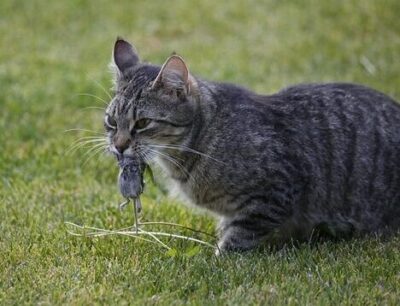
11. Kneading You with Their Paws
Kneading (or “making biscuits”) is a behavior that originates in kittenhood. Adult cats continue this behavior with their favorite humans as a sign of comfort and love.
How to Respond: Let your cat knead as long as it’s comfortable for you. If its claws hurt, place a soft blanket on your lap.
12. Chirping or Trilling at You
Some cats vocalize their affection by making chirping or trilling sounds. This usually happens when they greet you or want your attention.
How to Respond: Talk back in a soft, happy tone to reinforce the bond.
13. Sitting on Your Stuff
Cats love to sit on your laptop, books, or whatever you’re focused on. This is their way of getting your attention and showing affection.
How to Respond: Give your cat some attention by petting it or playing for a few minutes before resuming your activity.
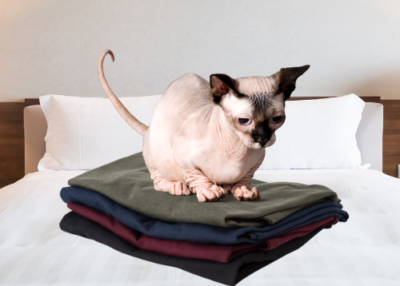
Cats have their unique ways of expressing love, and each feline has its own personality. Observing their behaviors and responding appropriately strengthens your bond and makes your cat feel even more loved and secure in your home. Enjoy every little sign of affection your furry companion shows you!
Leave a Reply